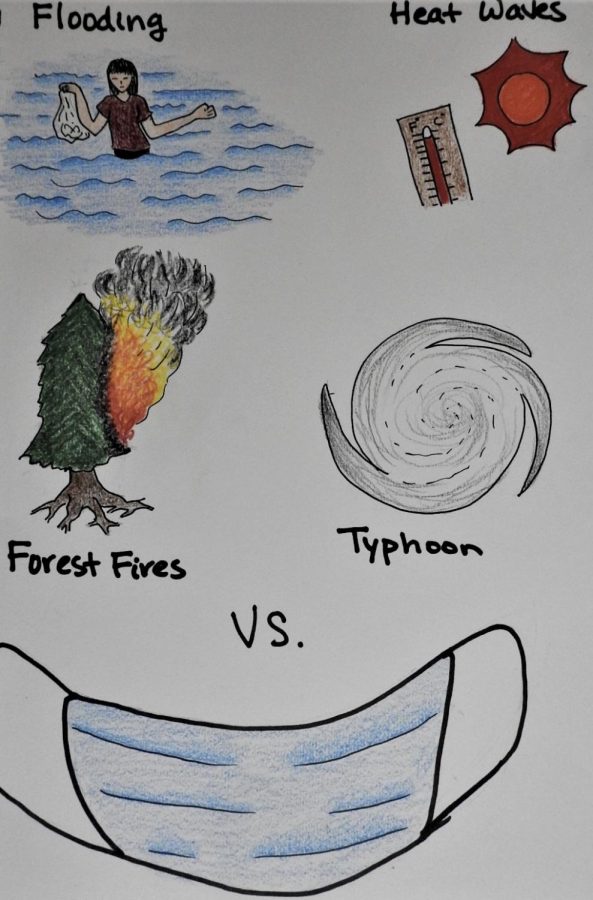Climate change: Natural disasters in Asia
The Weather Channel reported 30 storms in the 2020 record-breaking hurricane season.
December 14, 2020
With COVID-19 being such a prevalent and persistent issue in our minds, it’s no surprise that the pandemic is all we can think of; it’s all over the news and we’re constantly reminding ourselves to follow the proper health guidelines. Of course, such a response is understandable and even expected since COVID-19 could affect anyone and everyone.
However, the “hype” surrounding COVID-19 needs to take a step back. Despite its large impact, we must remind ourselves not just to keep our face masks on, but that there are other issues at hand. One such issue has been largely overshadowed by COVID-19, but its influence on human life and the safety of the world needs to be addressed again. The issue: climate change.
To be more specific, the most recent example of climate change can be seen in Asian regions. If we take a closer look at climate change in Southeast Asia, we are met with the all too familiar scenes of raging wildfires, devastating typhoons, and overbearing heat. According to CNBC, the probability of those living in Southeast Asia to face a lethal heat wave is estimated to be about 20% by 2050.
“Overall poorer more underdeveloped countries are affected the most. For example, Haiti is still suffering from past earthquakes and hurricanes and it has limited resources to deal with these natural disasters and then you add the effects of climate change. There is a lot of deforestation in Haiti which increases landslides etc,” said Amador AP Biology teacher Renee Ogle.
Not only do these natural disasters destroy homes and harm lives, but the aftermath is extremely costly. While rebuilding infrastructure is costly in and of itself, an NRDC report states that $360 billion will be allocated to estate losses, other costs can come from the loss of labor.
As CNBC states in their recent article, “By 2050, between $2.8 trillion and $4.7 trillion of gross domestic product in Asia will be at risk every year from a loss of effective outdoor working hours due to higher temperatures and humidity.”
The report also claims that poorer and more underdeveloped countries suffer the most because they rely more heavily on physical, outdoor work. On the other hand, more developed nations are more technologically advanced and can rely more on indoor work.
Climate change is still as devastating as it has ever been, if not more. The need to educate the population on climate change and its effects should be revitalized.
However, a Stanford study found that the shelter-in-place orders due to COVID-19 have helped decrease the amount of carbon dioxide emissions by 17% since less people are out and about.
“We should definitely still educate people about climate change. The drop in greenhouse gasses due to the initial shelter in place were amazing. If we can continue to work from home more after the pandemic than hopefully we can continue that trend,” said Ogle.
All in all, climate change is a global issue that needs to be addressed again. While the pandemic may be the most pressing matter at hand, we must remind ourselves to be aware of old issues.




